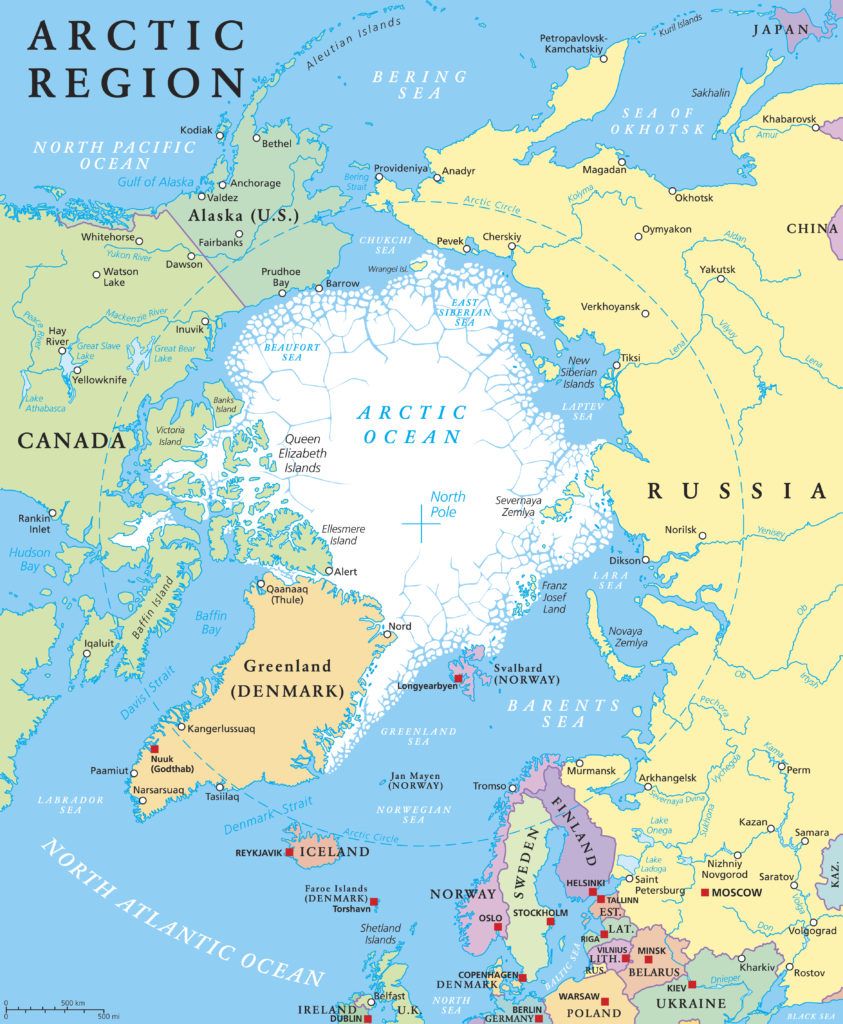Possibly the most under-reported ‘flyover’ countries are not technically countries at all: the vast unpopulated areas around the North and South Poles. For only nerds and students of geopolitics have probably heard of the excellent (Independent) Barents Observer. It’s a newspaper established in 2002 but which – after a row – became an independent website two years ago.
For sure, thawing ice caps receive huge attention from environmental correspondents and activists. Defence experts also increasingly report on the militarisation of the Arctic – mainly by Russia. There’s also the Baltic threat which, this week, saw ten million Swedes being instructed to urgently brush up on their civil defence skills.
After allowing fifty Cold War era installations to fall into icy desuetude in the 1990s, in August 2007 Vladimir Putin signalled a return to the Arctic. A mini Russian submersible planted a metal Russian flag 4,261 metres below the North Pole. Putin compared this with the Apollo spacecraft putting the Stars and Stripes on the Moon. In 2001 Russia asserted rights over the Lomonosov Ridge, an 1,800 kilometer underwater mountainous feature, within Russia’s Arctic zone of interest, but which lies far beyond Russia’s official continental shelf. Canada and Denmark dispute that claim, which may involve billions of barrels of oil too.
The Russians are scaling up two existing Arctic warfare brigades into divisions. These heavily insulated troops move around on quadricycles or sleighs pulled by reindeer. There are also 14 operational airbases. By contrast, the Americans – who have had a big airbase at Thule on Greenland since 1951, have been slow to take an interest in the Arctic. For example, the US has one functioning icebreaker (two less than Kazakhstan has on the Caspian Sea) whereas Russia has forty, of which six are nuclear-powered. Despite the US being a founder member of the Arctic Council, which since 1996 effectively governs the north polar region, the Arctic falls through a number of US bureaucratic cracks, and the Trump administration has not appointed a new Arctic Envoy. Its pervasive scepticism towards man-made climate change does not help either.

As elsewhere, the Russians are like one of the empty shells in the old three shells hiding a pea trick. You need sharp eyes to know where the pea really is.
In 2013 the Arctic Council’s existing members – Canada, Denmark, Finland, Iceland, Norway, Russia, Sweden and the US (all of which sound pretty chilly to me) – welcomed a new observer member, even though its most northerly point is 1,000 kilometres south of the Arctic Circle. This was China, which got round mere geography by claiming that its coastal cities face catastrophic flooding from melting ice caps, which justified Beijing being an “Arctic stakeholder’”.

 Main Edition
Main Edition US
US FR
FR






Join the discussion
Join like minded readers that support our journalism by becoming a paid subscriber
To join the discussion in the comments, become a paid subscriber.
Join like minded readers that support our journalism, read unlimited articles and enjoy other subscriber-only benefits.
Subscribe